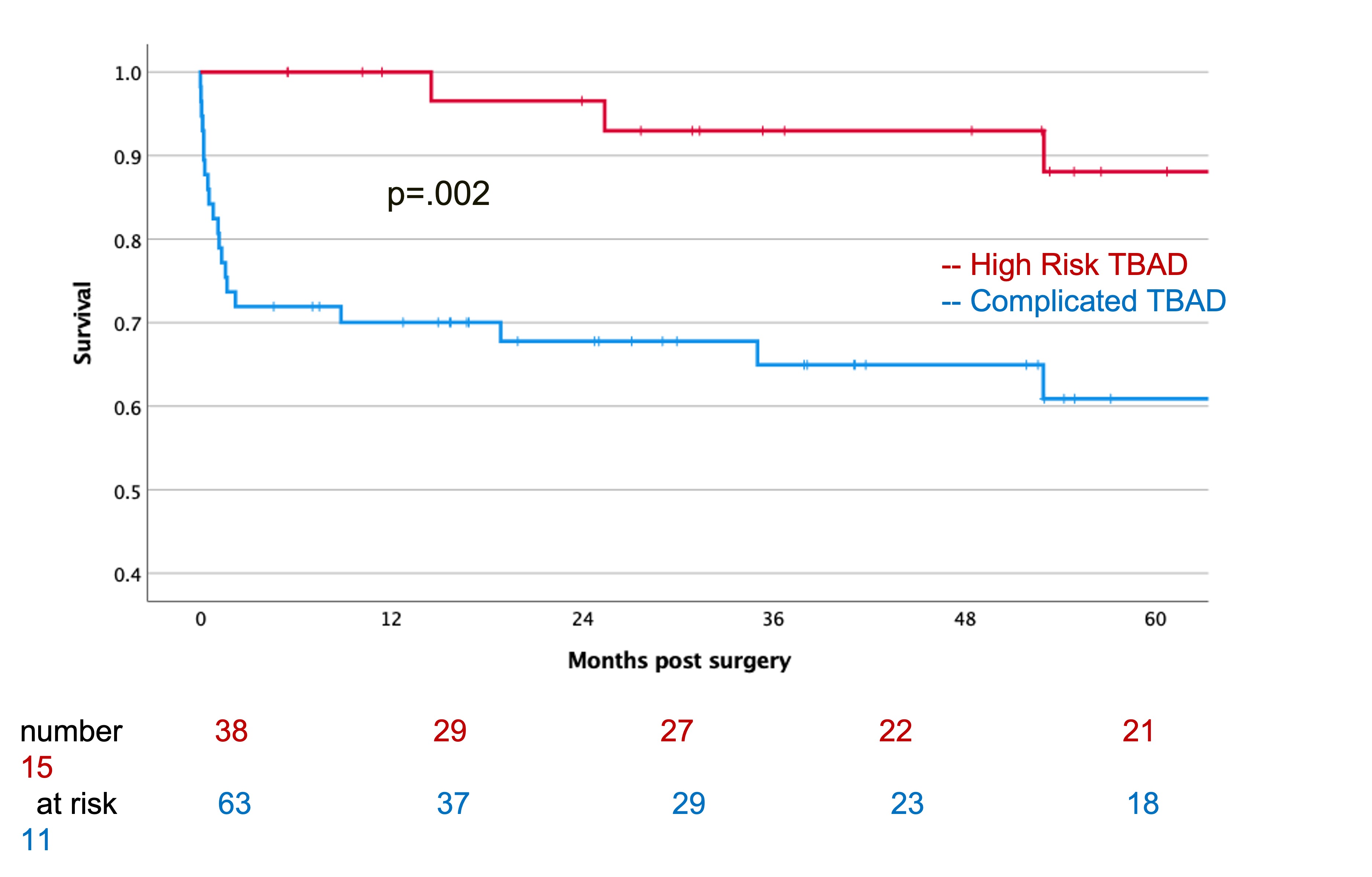Complicated Versus High-Risk Patients Undergoing Thoracic Endovascular Aortic Repair for Acute Type B Dissection
Amanda C Filiberto, Christopher Jacobs, Brian Fazzone, Jonathan Krebs, Erik Anderson, Gilbert R. Upchurch Jr., Michol Cooper
University of Florida, Gainesville, FL
Background: Recently the SVS and STS published contemporary guidelines clearly defining complicated vs uncomplicated type B aortic dissections (TBADs) with an additional high-risk grouping. Few studies have evaluated outcomes associated with “high-risk” vs “complicated” TBADs. The objective of this study was to assess differences in demographics, clinical presentation, symptom onset, and outcomes in patients undergoing thoracic endovascular aortic repair (TEVAR) for acute complicated TBAD (C-TBAD) and high-risk TBAD (HR-TBAD). Methods: Patients undergoing TEVAR (n=101) for acute complicated and high-risk TBADs from a single academic medical center were analyzed. Per STS/SVS 2020 guidelines, high-risk was defined as refractory pain/hypertension and complicated was defined as ruptured/malperfusion presentation. The primary end-point was inpatient mortality. Secondary end-points included complications, re-intervention and survival. Logistic regression was used for risk-adjusted comparisons and life-table methodology estimated freedom from end-points. Results: 63 patients (63%) were classified as C-TBAD and 38 patients (38%) were classified as HR-TBAD. There were no differences in age, sex or time from onset of symptoms. C-TBAD had significantly increased ASA, risk of any complication (70 vs 50%, p=.058) and mean complications (1.2 vs 0.63, p=.003) yet similar re-intervention rates. Importantly, there were no inpatient or 60-day deaths in HR-TBADs while there was a significant increase in C-TBADs at 21% (p=.002) and 25%(p=.004), respectively. C-TBADs had decreased long-term survival at 1, 3 and 5-years (70, 65 and 61%) as compared with HR-TBADs (100, 93 and 88%, p=.002 (Figure 1)). On multivariate regression, the strongest independent predictor of mortality was cardiovascular disease (HR 5.6,CI 2.3-14,p<.001) followed by C-TBAD status (HR 5.1,CI 1.5-18,p.01). Conclusions: Consistent with the newly updated STS/SVS guidelines, patients with acute complicated TBADs undergoing TEVAR have poorer perioperative and long-term outcomes compared with those TBADs with high-risk features. These findings may improve preoperative surgical risk stratification and patient counseling. 
Back to 2023 Display Posters


